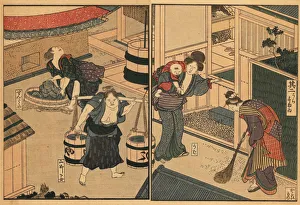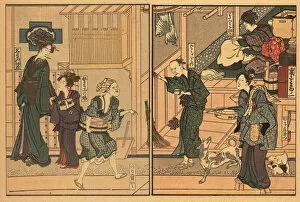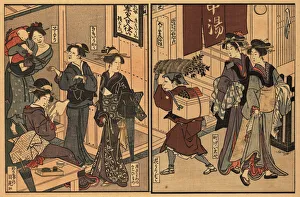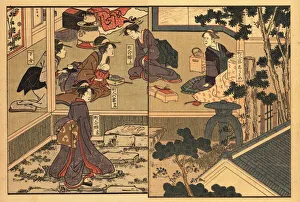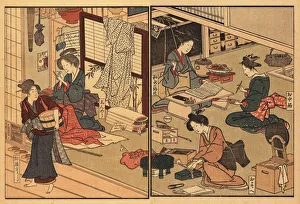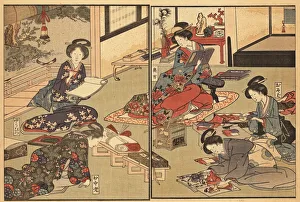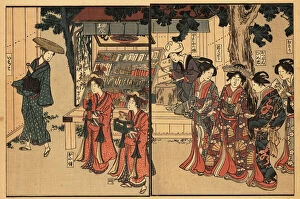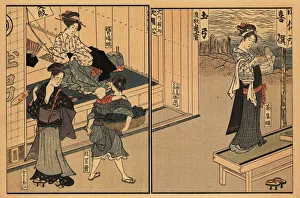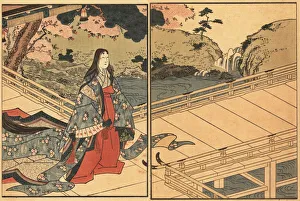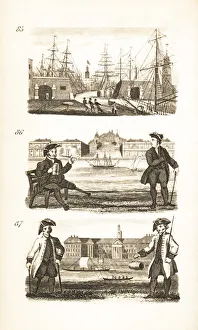Sugata Collection
"Sugata: Unveiling the Lives of Women in 18th Century Tokyo" Step into the vibrant streets of Edo, where women from all walks of life shaped the fabric of society
All Professionally Made to Order for Quick Shipping
"Sugata: Unveiling the Lives of Women in 18th Century Tokyo" Step into the vibrant streets of Edo, where women from all walks of life shaped the fabric of society. In this captivating era, we catch a glimpse of the working-class women in Tokyo, toiling tirelessly to support their families and carve out a place for themselves. As we wander through an Edo street scene, our eyes are drawn to young women adorned as geishas, enchanting passersby with their grace and talent. Their presence adds color and charm to the bustling cityscape. Meanwhile, within the walls of a house with a serene courtyard, wealthy townswomen gather. Here they find solace amidst their opulent surroundings – a respite from societal expectations. These women belong to the merchant or artisan class; their success is evident in every intricate detail that adorns their abode. Intriguingly, we witness a concubine (mekake) observing intently as a dancer captivates her audience. Her position beside her high-ranking partner grants her both privilege and vulnerability – caught between love and duty. On another note entirely, let us not forget about the wives belonging to Japan's elite samurai class who take moments for relaxation amidst their demanding lives. They embody strength and elegance simultaneously - pillars supporting both family honor and personal aspirations. Venturing outside Tokyo's confines reveals Japanese women picnicking in lush fields during this period - reveling in nature's beauty while cherishing each other's company. Their laughter echoes across time as they create memories that transcend generations. The aristocratic women parade past shops along Tokyo's streets - symbols of status intertwined with consumerism even then. The allure of luxury goods entices them as they navigate social norms while maintaining an air of sophistication. Amidst it all lies an archery range on an Edo street; here skill meets tradition as men and women alike test their prowess.

